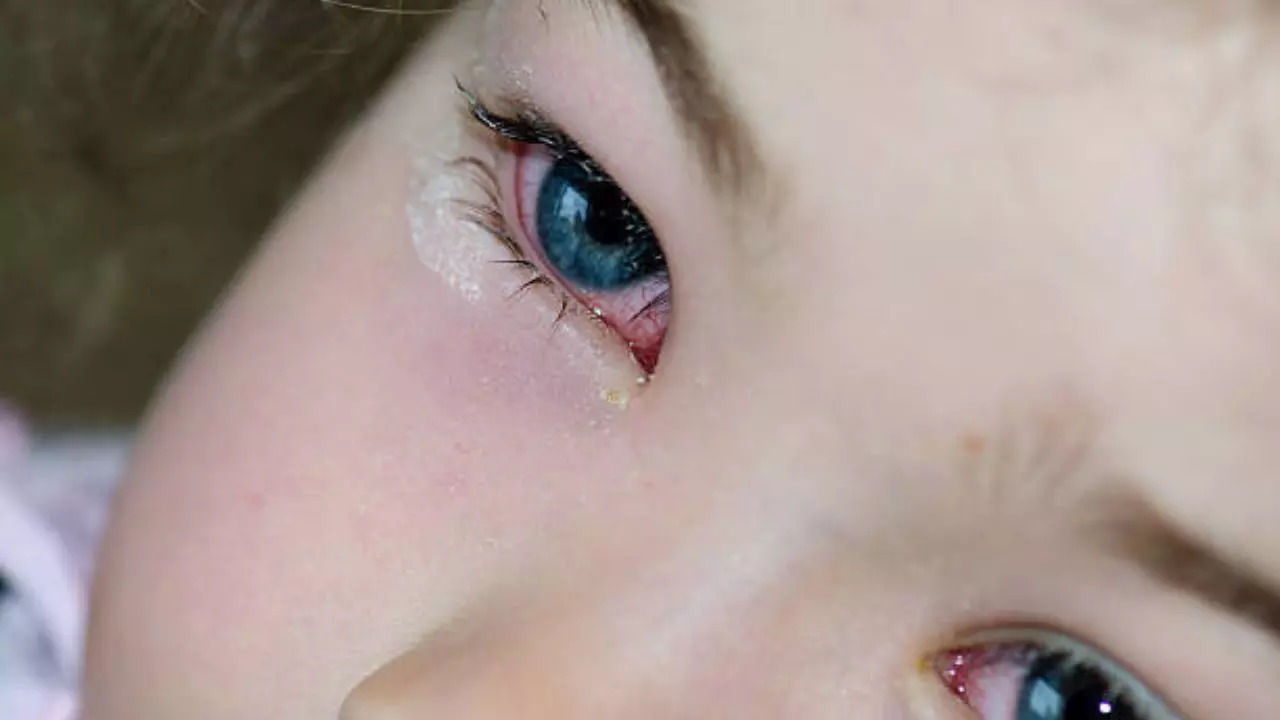Contents
Conjunctivitis Alert: Why do children get this disease during monsoon? Know the ways to prevent itHow is conjunctivitis spread?Signs and symptoms of conjunctivitis in childrenTips to protect children’s eyesWash your hands frequentlyeat a balanced dietProper lighting in the homeSafety measures to prevent eye injuriesEye examination
Conjunctivitis Alert: Why do children get this disease during monsoon? Know the ways to prevent it
When monsoon arrives, most children are more likely to suffer from conjunctivitis or pink eye, an infection that causes redness, itching and swelling around the eyes. According to doctors, this highly contagious disease is common in children because they are often in close contact with each other at school or daycare. Bacteria and viruses spread easily from one to another, while contaminating surfaces like door handles and desks. Read on to know some ways to prevent them.

Children can get conjunctivitis by touching an infected person or something they have touched (such as a used tissue)
Also known as pink eye, conjunctivitis is the most common eye condition that affects the white part of the eye and the transparent membrane inside the eyelids. It can be caused by infection or allergies – conjunctivitis is especially common in children under the age of five as it is highly contagious.
According to doctors, most children recover within a week or two, but the symptoms are very severe and do not go away on their own. Timely treatment can help prevent serious eye health problems.
How is conjunctivitis spread?
Doctors say pink eye is the most common infectious condition and comes in four subtypes: viral, bacterial, fungal and parasitic. Viral and bacterial conjunctivitis are extremely common, while fungal and parasitic conjunctivitis are generally uncommon or even rare.
According to experts, viruses and bacteria are the most common causes of acute conjunctivitis in children, who are often in very close contact with each other and do not follow good hygiene. Germs spread easily from person to person and contaminate surfaces such as door handles and school desks. Children can also get conjunctivitis by touching an infected person or something they have touched, such as a used tissue. During monsoons, it also spreads through contaminated water or shared towels.
Signs and symptoms of conjunctivitis in children
itchy, burning eyes
Swelling of the eyelids
redness of the conjunctiva
There is mild pain when the child looks at the light
Burning sensation in the eyes
Eyelashes stick together in the morning
Clear, thin fluid draining from the eyes, often caused by a virus or allergies
Sneezing and runny nose, most often due to allergies
Stringy discharge from the eyes, usually caused by allergies
thick, green discharge, often caused by a bacterial infection
ear infections, usually caused by bacterial infections
scaly lesions on the eyelids, often caused by a herpes infection
Tips to protect children’s eyes
Doctors say that some forms of conjunctivitis are preventable, and there are a few things you can do:
Wash your hands frequently
Wash your hands with soap and water whenever you come home from outside. You can ensure that the child uses an alcohol-based hand sanitizer at school.
eat a balanced diet
“Include foods rich in omega 3 fatty acids, vitamins A, C and E, and minerals like zinc in their diet. Their eyes need adequate water to function optimally,” Dr Kriti Shah, consultant ophthalmologist at Dr Agarwal’s Eye Hospital, told Times Now.
Proper lighting in the home
According to Dr Kruthi, it is important to ensure that your child studies in a well-lit environment. Otherwise, eye strain can lead to itching and watering and put them at risk of infections such as conjunctivitis. “The light should fall directly on the reading material and not on their shoulder to reduce glare and eye strain. Proper lighting can make reading comfortable and prevent eye fatigue,” she said.
Safety measures to prevent eye injuries
Promote safe play habits and keep sharp objects and flammable items out of reach of children. “Use protective goggles whenever necessary to promote eye safety,” said Dr Kriti.
Eye examination
He said, “If you notice that your child is having difficulty reading at a normal distance, squinting or showing other vision problems, get an eye test done.” Regular check-ups will also ensure that if your child is suffering from an infection, you will be able to get it treated in time.
Get the latest news on Times Now as well as breaking news and top headlines from across health and the world.


